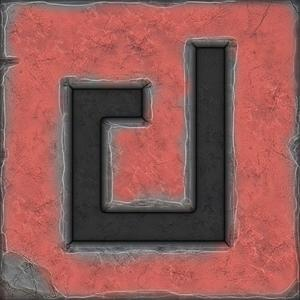Your comments
Good job on the progression! The method you use is good as well. If you have issues with that last part and you give us more information, we may be able to help (i.e.: what objects are not sorted correctly? and what formula are you using?).
- Michele
- Michele
Hello, here is an idea on how to do what you are asking.
First, a few notes. The GeneratorBehaviour script creates an array of VirtualMaps, which are then coupled with an Interpreter and then fed to a PhysicalMap to at last create the actual map you see. The combination of VirtualMap and Interpreter is all you need to define, logically, a map. The PhysicalMap exists to basically 'render' the map to screen, instancing the objects.
This means that if you obtain the array of VirtualMaps from the GeneratorBehaviour script, take each single VirtualMap, couple it with the same Interpreter and then pass both to a new PhysicalMap (2D to make a minimap), you can make the new PhysicalMap mirror the dungeon's PhysicalMap. This new PhysicalMap will also represent just one of the storeys, as each VirtualMap in the array is one storey.
Note also that, instead of separating all VirtualMaps, you could do the same by using a 3D, multi-storey PhysicalMap that uses sprites as prefabs, then move the camera of your minimap so that you can see only one of the floors.
Hope this helps, we have not tested this yet but it should be working. Let us know if you progress! Thanks.
- Michele
First, a few notes. The GeneratorBehaviour script creates an array of VirtualMaps, which are then coupled with an Interpreter and then fed to a PhysicalMap to at last create the actual map you see. The combination of VirtualMap and Interpreter is all you need to define, logically, a map. The PhysicalMap exists to basically 'render' the map to screen, instancing the objects.
This means that if you obtain the array of VirtualMaps from the GeneratorBehaviour script, take each single VirtualMap, couple it with the same Interpreter and then pass both to a new PhysicalMap (2D to make a minimap), you can make the new PhysicalMap mirror the dungeon's PhysicalMap. This new PhysicalMap will also represent just one of the storeys, as each VirtualMap in the array is one storey.
Note also that, instead of separating all VirtualMaps, you could do the same by using a 3D, multi-storey PhysicalMap that uses sprites as prefabs, then move the camera of your minimap so that you can see only one of the floors.
Hope this helps, we have not tested this yet but it should be working. Let us know if you progress! Thanks.
- Michele
You're right, in the future that method will be used for Zones (another upcoming feature), so if you need a do-and-forget solution, that's not what you want to be using. I don't know how resource-intensive is that, Daedalus is a relatively 'young' package, so maybe we'll take the chance with your question and try to find the best way to implement a minimap. Anyway, keep in mind that every time you generate a map, you have a VirtualMap which holds all the information you need; we then use that to draw the actual graphics (through PhysicalMap). Maybe you can find your own way to handle those information to draw a minimap. We'll give it a shot asap, but please keep us posted since it's a very interesting topic.
You could use PhysicalMap.GetObjectsOfZone(int zone) to get all the GameObjects of a floor. Then you could use those to draw your minimap and fade it when you reach another floor.
Do you need to create a minimap for a multi-floor dungeon?
Good call, that's a nice improvement I didn't think of. The SendMessage will be surely changed to a BroadcastMessage in the next version! I'll also add a 'IsGenerating' property to the generator for the same purpose, could be useful.
Thank you for your feedback!
Thank you for your feedback!
I'm afraid that couldn't be done; Daedalus is tile-based, so it and Buildr are completely different. In next versions we'll add some more features to generate different kind of maps, though.
Customer support service by UserEcho


selectionDict[SelectionObjectType.Ladder] = new VirtualCell.CellType[2]{
VirtualCell.CellType.Ladder,
VirtualCell.CellType.Ladder2}
Remember also to add Ladder to the SelectionObjectType.cs enumerator.
We'll add this in the next release, too. Thanks for the heads up! :)
- Michele